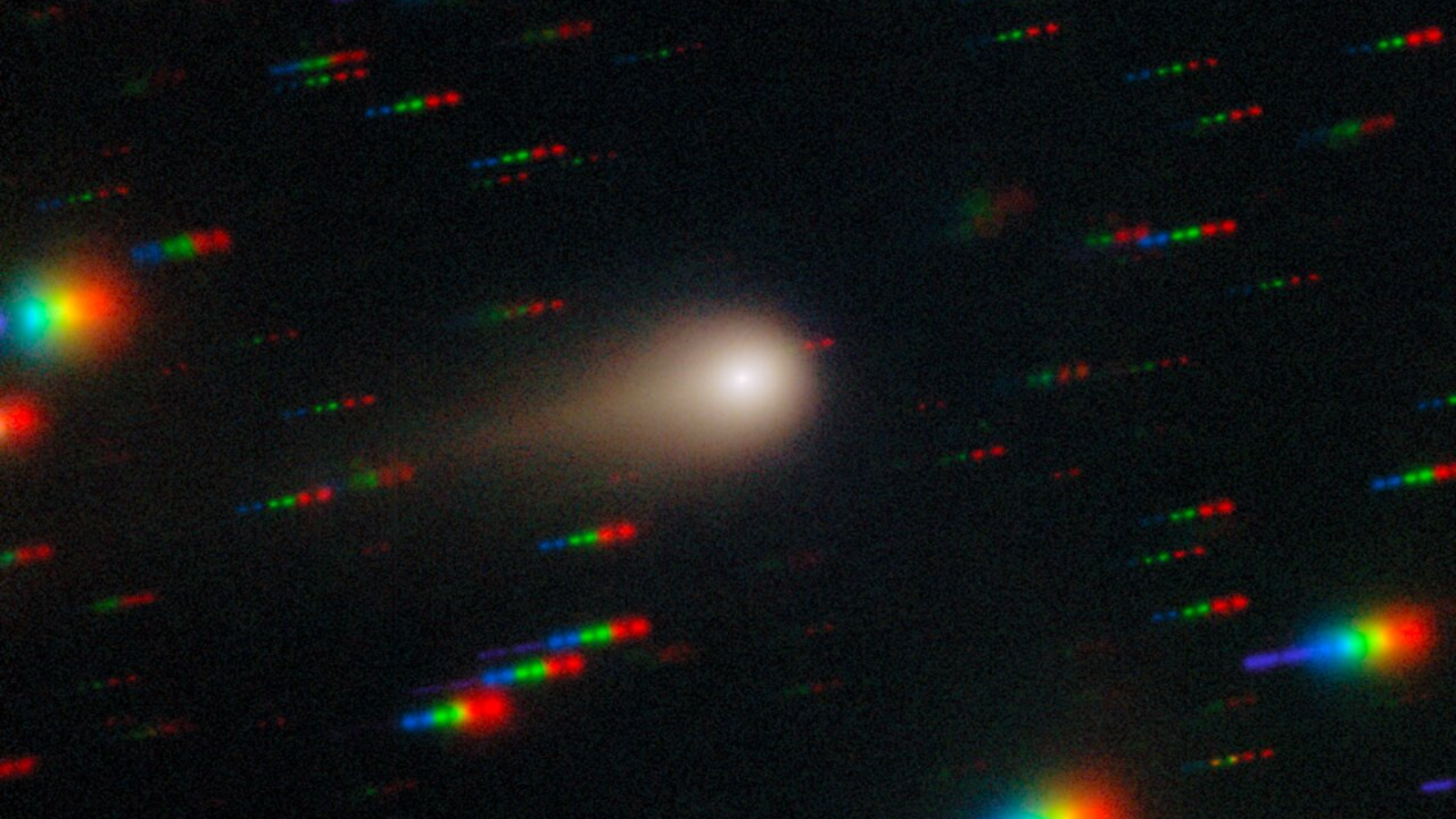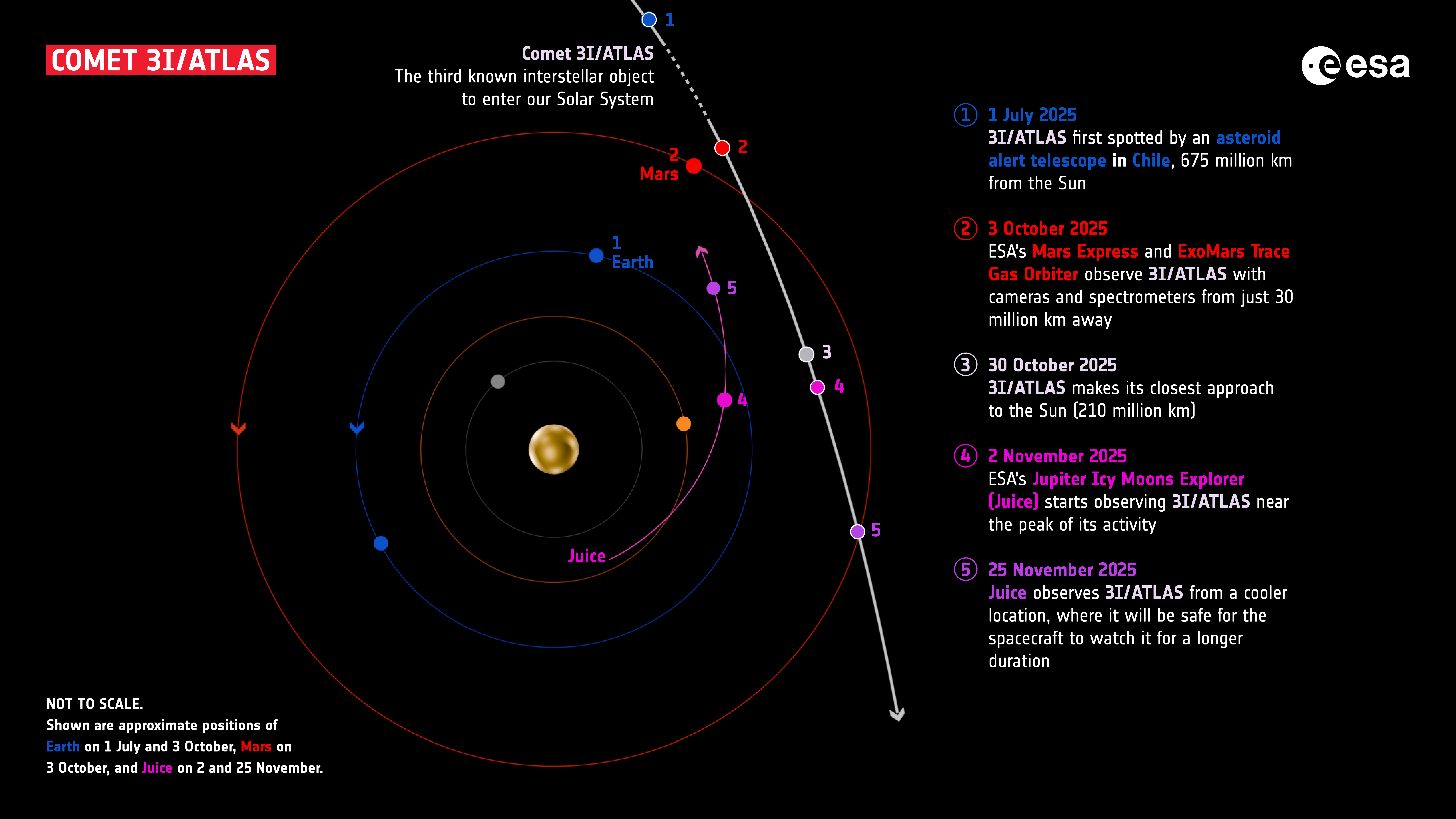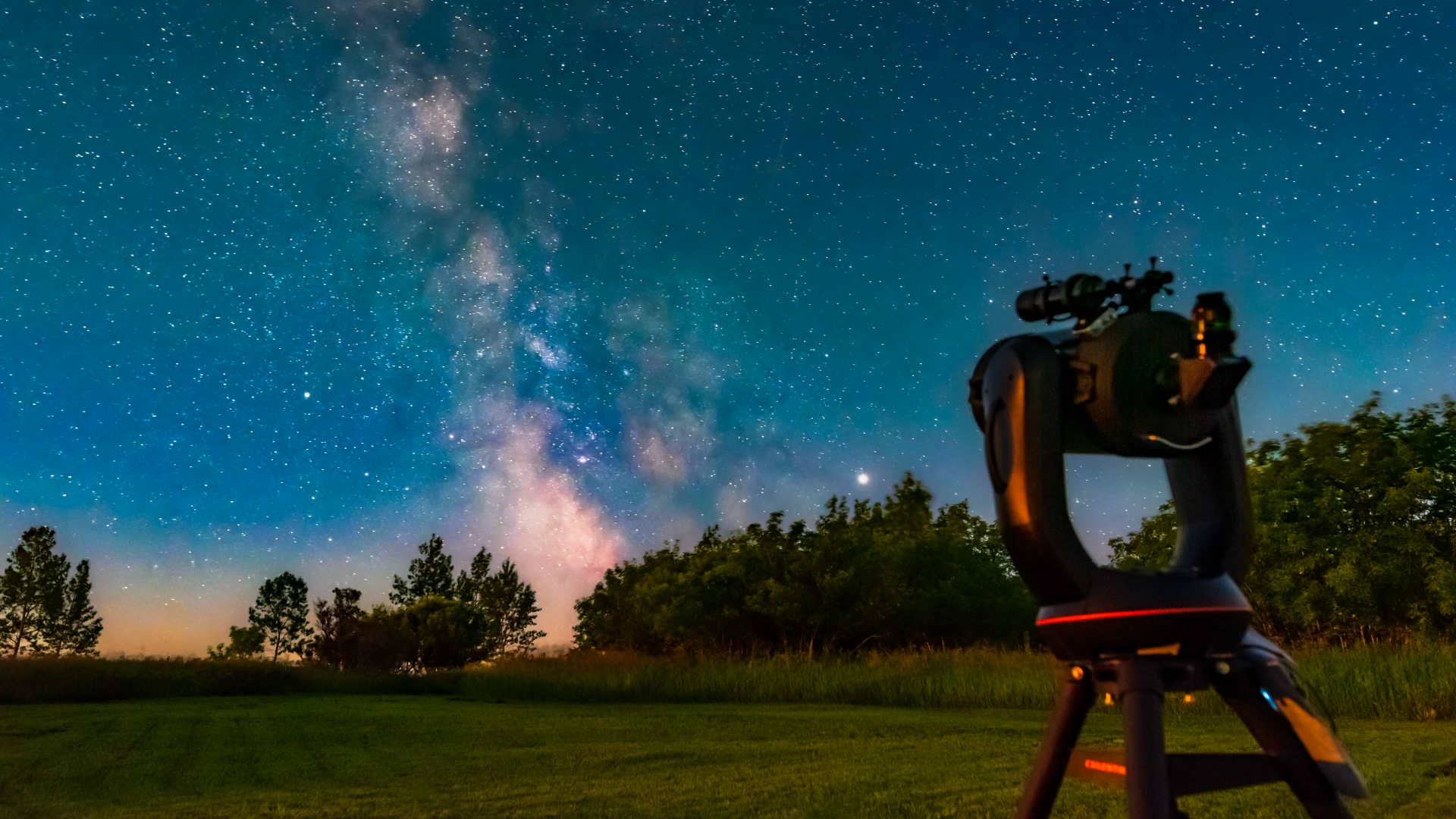Interstellar comet 3I/ATLAS will be eyed by Mars and Jupiter probes as it zooms past the sun this month
Observing 3I/ATLAS in this active phase will give some of the clearest insights yet into the mystery of interstellar comets.

The European Space Agency is making use of spacecraft designed for Mars and Jupiter missions to track interstellar comet 3I/ATLAS as it continues its journey through our solar system.
First spotted in July 2025 by an ATLAS (Asteroid Terrestrial-impact Last Alert System) telescope in Chile, 3I/ATLAS became the third known interstellar object to pass through our solar system. Astronomers identified its extrasolar origin due to its unusual trajectory, which doesn't follow a closed orbit around the sun, and velocity of around 130,000 mph (219,000 km/h). Astronomers have noted that 3I/ATLAS would remain visible to ground-based telescopes until September 2025, before its path carries it too close to the sun — and eventually behind it from Earth's perspective.
That brief window complicates efforts to study the comet's size, composition, and surface activity, clues that could shed light on what such interstellar objects are made from and whether they resemble comets born in our own solar system. However, scientists are seizing the opportunity to watch the comet in real time from beyond Earth using a fleet of ESA and NASA planetary missions already orbiting the inner solar system. From their vantage point on the sun-facing side of the comet's trajectory, these spacecraft will be able to keep observing 3I/ATLAS even after it slips out of reach from Earth.
"Between 1 and 7 October, our Mars orbiters Mars Express and ExoMars Trace Gas Orbiter will observe the comet as it passes close to Mars, with the closest distance between the spacecraft and the comet being 30 million km on 3 October," ESA wrote in a statement. NASA's Psyche mission, currently on route to the asteroid 16 Psyche located in the main asteroid belt between Mars and Jupiter, will also catch a glimpse.
Between Nov. 2 and 25, ESA's Jupiter Icy Moons Explorer (Juice) will turn its instruments toward 3I/ATLAS. Juice's observations will begin just after 3I/ATLAS reaches perihelion — its closest approach to the sun. That moment is crucial because the sun's heat drives the comet into its most active phase, causing its ices to vaporize and stream into space.
"JUICE will be in the best position for the important period around the 3I/ATLAS perihelion, when observations from Earth will be the hardest," said T. Marshall Eubanks, Chief Scientist at Space Initiatives Inc in a previous interview with Space.com. "Various spacecraft orbiting Mars, including the Mars Reconnaissance Orbiter (MRO), Tianwen-1, and Hope, all have both the vantage point and good equipment to provide good data on 3I/ATLAS. [However,] of all of these, I think that the JUICE data near perihelion is likely to be the most critical."
ESA notes that observing the comet during this period will yield the most valuable data, revealing its true chemical makeup and activity at peak intensity. This is because it will be close enough to the sun that solar radiation will heat the ice at the comet's core, vaporizing and causing it to erupt from the comet's surface. The comet's nucleus will be shrouded in a luminous halo of gas and dust, with a long tail streaming out behind. This window will allow astronomers to measure the full composition of the comet through the gases and dust being released, offering a chemical fingerprint of 3I/ATLAS.
Breaking space news, the latest updates on rocket launches, skywatching events and more!
For an interstellar visitor like 3I/ATLAS, this is especially exciting because it will let scientists compare its makeup with comets formed in our own solar system. If the chemistry matches, it suggests planetary systems across the galaxy may share common building blocks; if it doesn't, it could reveal exotic ingredients from another star system.
Either way, observing 3I/ATLAS in this active phase will give some of the clearest insights yet into the mystery of interstellar comets.

A chemist turned science writer, Victoria Corless completed her Ph.D. in organic synthesis at the University of Toronto and, ever the cliché, realized lab work was not something she wanted to do for the rest of her days. After dabbling in science writing and a brief stint as a medical writer, Victoria joined Wiley’s Advanced Science News where she works as an editor and writer. On the side, she freelances for various outlets, including Research2Reality and Chemistry World.
You must confirm your public display name before commenting
Please logout and then login again, you will then be prompted to enter your display name.

